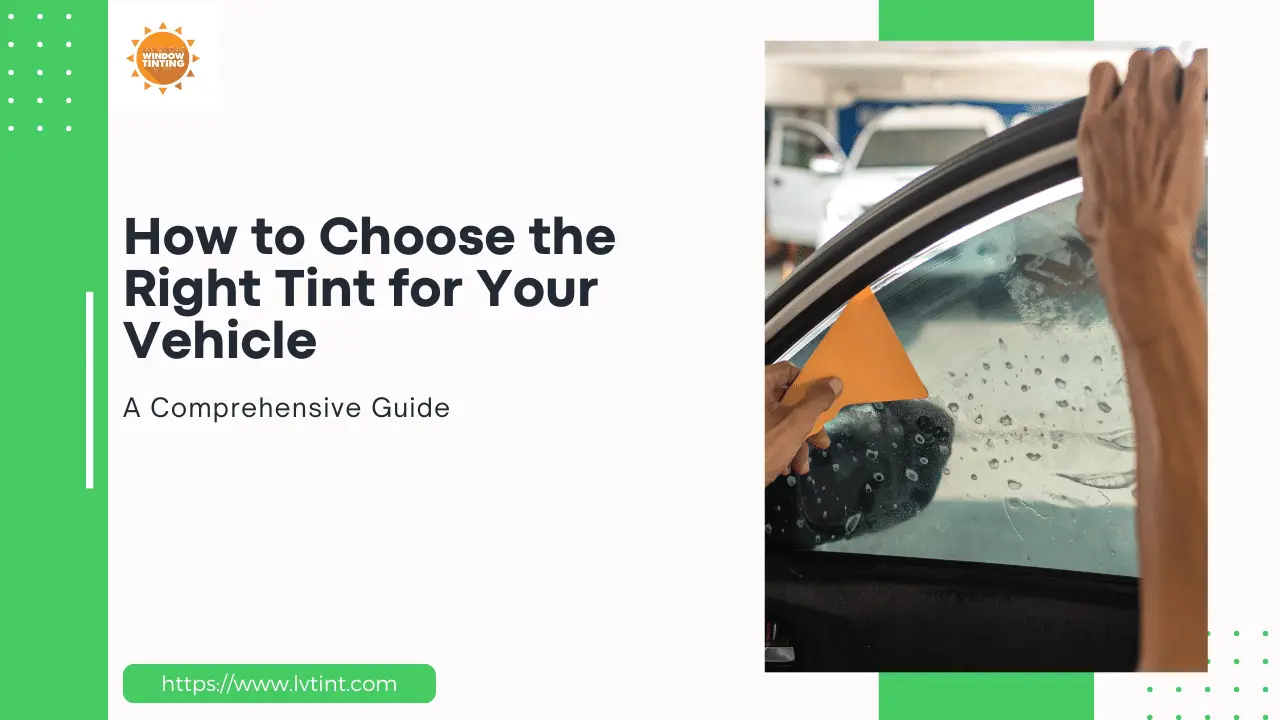
Window tinting has become a popular car customization option, offering not only aesthetic benefits but also practical advantages like heat rejection, glare reduction, and privacy. But with so many different tint shades options available, choosing the right one for your vehicle can be overwhelming. This car tint guide will walk you through the essential factors to consider, helping you pick the perfect tint that matches your needs and style.
Understanding Tint Shades and Visibility
The percentage of visible light transmission (VLT) determines the darkness of the tint. Lower VLT percentages indicate darker tinting, while higher percentages allow lighter in. Here’s a breakdown of common VLT levels and their visibility impact:
50% VLT and Above:
- Visibility: Excellent, almost identical to un-tinted windows.
- Benefits: Slight heat rejection and glare reduction, UV protection.
- Drawbacks: Offers minimal privacy.
35% VLT:
- Visibility: Good, noticeable darkening but still comfortable for driving.
- Benefits: Moderate heat rejection and glare reduction, good privacy.
- Drawbacks: May not be legal in all states.
20% VLT:
- Visibility: Significant darkening, requires increased caution while driving at night.
- Benefits: Strong heat rejection and glare reduction, excellent privacy.
- Drawbacks: Might be illegal in some states, hinders rearview mirror visibility.
15% VLT and Below:
- Visibility: Very dark, significantly impacts nighttime driving and may be unsafe.
- Benefits: Maximum heat rejection and glare reduction, extreme privacy.
- Drawbacks: Illegal in most states, poses safety risks due to limited visibility.
Key Factors to Consider When Choosing a Tint:
Local Laws and Regulations:
Each state has specific tint laws, often with varying VLT limitations for different windows. Exceeding these limits can result in fines and even vehicle impounding. Research and adhere to your local regulations before choosing a tint.
Climate and Sun Exposure:
If you live in a hot and sunny climate, a darker tint can offer significant heat rejection, keeping your car cooler and reducing air conditioning strain. Consider your typical driving environment and sun exposure patterns when making your decision.
Driving Habits and Visibility Needs:
Do you frequently drive at night or in poorly lit areas? Prioritize visibility if this is the case. Pot for lighter tint shades or consider excluding the front windshield to maintain safe nighttime driving.
Privacy Preferences:
Darker tinting provides greater privacy for passengers and belongings within your vehicle. Decide how much privacy you desire and choose a tint level accordingly.
Aesthetic Look and Vehicle Type:
Tints can change the appearance of your car. Matching the tint shade to your vehicle’s collar or opting for complementary hues can enhance its aesthetic appeal. Consider the existing style of your car and desired visual outcome.
Exploring Different Tint Types and Technologies:
Dyed Film:
- Most affordable option.
- Offers basic heat rejection and UV protection.
- May fade over time and appear purple from certain angles.
Ceramic Film:
- Higher cost than dyed film.
- Superior heat rejection and UV protection.
- Retains its colour and clarity better than dyed film.
Metalized Film:
- Reflects heat and glare effectively.
- May interfere with radio and GPS signals.
- Can create a mirror-like appearance.
Hybrid Film:
- Combines features of ceramic and metalized film.
- Offers strong heat rejection, glare reduction, and UV protection.
- More expensive than other options.
Maintaining Your Window Tint:
Once you’ve chosen the perfect tint and had it professionally installed, proper care will ensure its longevity and performance. Here are some tips:
- Wash your car gently: Avoid using harsh detergents or abrasive sponges, which can scratch the tint film. opt for hand washing or a touchless car wash.
- Park in the shade: Excessive sun exposure can damage the tint film over time. If possible, park your car in the shade or covered areas.
- Clean your windows regularly: Use a gentle window cleaner and a soft microfiber cloth to remove dust, dirt, and fingerprints without scratching the tint.
- Avoid strong solvents: Keep away from strong chemicals like ammonia or acetone, which can damage the tint film.
- Get professional re-tinting: If your tint film shows signs of fading, peeling, or bubbling, consult a professional installer for re-tinting.
Choosing a Reputable Installer:
Proper installation is crucial for optimal tint performance and long-term durability. Always seek a reputable tint shop with experienced technicians. Look for certifications, positive customer reviews, and warranty guarantees.
Conclusion:
Choosing the right window tint for your vehicle requires careful consideration of your needs, preferences, and local regulations. By following the tips and information in this guide, you can make an informed decision and enjoy the benefits of a well-tinted car for years to come. Remember, prioritize safety and legality while achieving the desired look and functionality for your vehicle.
Frequently Asked Questions
VLT influences tint darkness, striking a balance between aesthetics and practical benefits like heat rejection.
Adhering to state tint laws avoids fines; each state has specific regulations on permissible tint darkness.
Balance heat rejection with local tint regulations for a lawful choice.
Different tint types offer varied benefits; consider factors like heat rejection and interference with radio signals when choosing.
